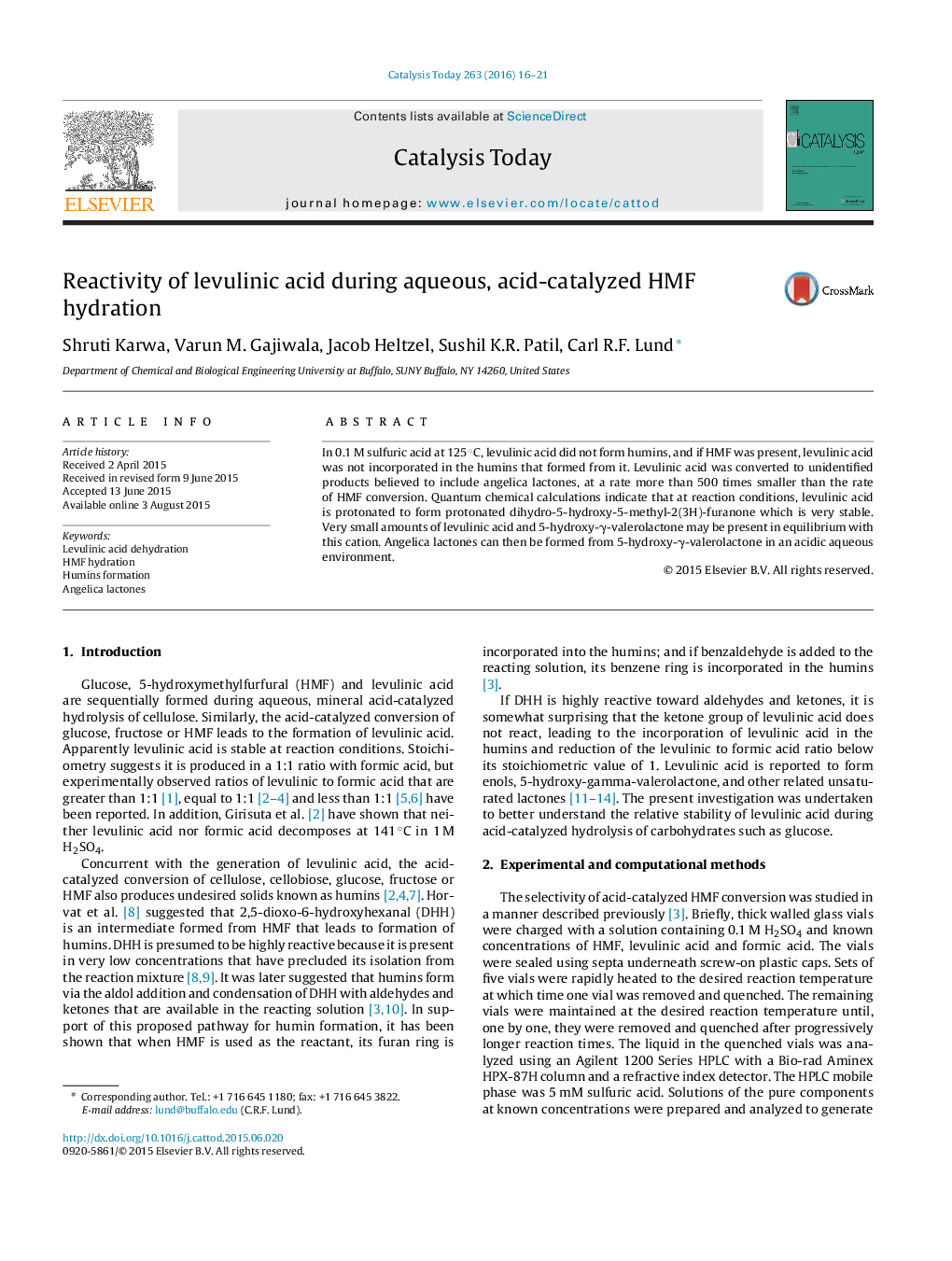| Article ID | Journal | Published Year | Pages | File Type |
|---|---|---|---|---|
| 53398 | Catalysis Today | 2016 | 6 Pages |
•Levulinic acid does not form humins directly.•Levulinic acid is not incorporated into humins formed from HMF.•In aqueous acidic solutions, levulinic acid exists as a stable, cyclic cation.•Intermediates in the dehydration of levulinic acid are identified.
In 0.1 M sulfuric acid at 125 °C, levulinic acid did not form humins, and if HMF was present, levulinic acid was not incorporated in the humins that formed from it. Levulinic acid was converted to unidentified products believed to include angelica lactones, at a rate more than 500 times smaller than the rate of HMF conversion. Quantum chemical calculations indicate that at reaction conditions, levulinic acid is protonated to form protonated dihydro-5-hydroxy-5-methyl-2(3H)-furanone which is very stable. Very small amounts of levulinic acid and 5-hydroxy-γ-valerolactone may be present in equilibrium with this cation. Angelica lactones can then be formed from 5-hydroxy-γ-valerolactone in an acidic aqueous environment.
Graphical abstractFigure optionsDownload full-size imageDownload high-quality image (84 K)Download as PowerPoint slide
